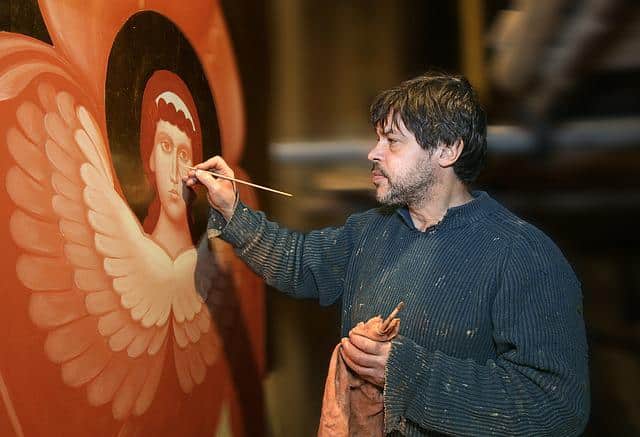
The seraphim contemplate God together with the cherubs.
The concept of seraphim derives from the late Latin serăphim , in turn from the Hebrew serafĭm . The term is used in Catholicism to name a class of celestial beings .
angelic spirits
The seraphim are angelic spirits that make up the first choir . Together with the thrones and the cherubs , the seraphim form the first hierarchy , contemplating God directly.
Before moving forward, it is important to mention that a choir is a group of spirits that give rise to an order. Orders, meanwhile, are categories or hierarchies.
According to theology , seraphim surround God and praise him constantly, exalting his glory. The iconography is responsible for representing them as beings with wings .
The wings of the seraph
Specifically, seraphim are represented with three pairs of wings . A pair of wings covers his feet as a symbol of humility ; another covers his face because, due to their immense beauty, only God can admire them; and the third pair of wings, finally, is the one that allows them to fly.
This detail of the seraphim's appearance is given by Isaiah in the Bible . Isaiah states that, upon being called by God in a vision, he saw him on his throne with winged beings around him, whom he called seraphim.
Royal Order of the Seraphim
In this case, we find the term in a different area, to give name to an order of chivalry from Sweden. This institution , which was based on the structure of the military orders of the Holy Land, was created by Frederick I , a Swedish king who ruled in the 18th century and who also created two other orders: that of the Sword and that of the North Star . Since 1975, when these were reorganized, the Seraphim award has only been granted to members of Swedish royalty and foreign heads of state.
The Order of the Seraphim, whose importance places it above all others in its country, has only one class, which for men is that of knight , while for women the term member is reserved. It is included in the group of the so-called Orders of His Majesty the King , which also includes the other two and that of Vasa , which Gustav III established when he was crowned in 1772.
Regarding their insignia, their members wear it on a pendant or on a band that surrounds the chest from the right shoulder. The first is made of gold, exhibiting eleven seraphim and eleven patriarchal crosses (the latter covered in blue enamel). Its insignia is the Maltese Cross , where gold, blue and white are combined. On the star , the seraphim and the crosses are silver, they have no enamel and the crown is not present. The band, on the other hand, is made in a light blue, which evokes the celestial character of the seraphim.

Beyond the religious sphere, the characteristics of the seraphim serve as inspiration for artists.
The investiture ceremony of the Order of the Seraphim took place annually, in the Chamber of Seraphim located in the Palace. It generally took place the day after the first Sunday of Advent , although the reception was held on April 28, in honor of its founder's birthday. Between both dates, the members could only wear the star.
As a proper name
Serafín , finally, is a male name that, although currently not very popular, is used in Spain and several Latin American countries . The Salvadoran poet Serafín Quiteño , the former Argentine rugby player Serafín Dengra and the Spanish politician Serafín Huder are some personalities who are called this way.
